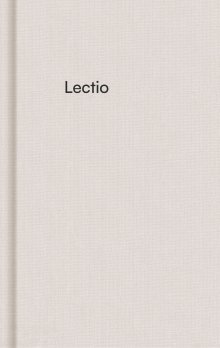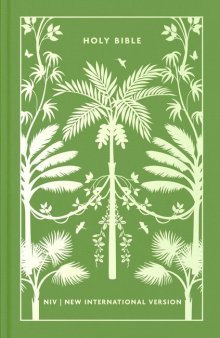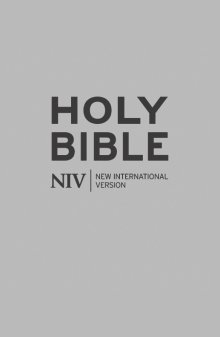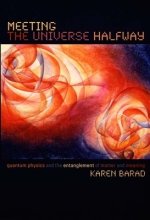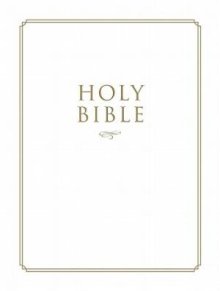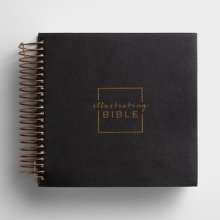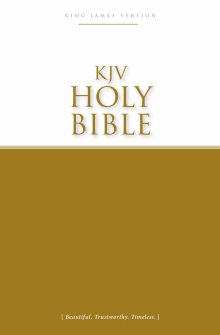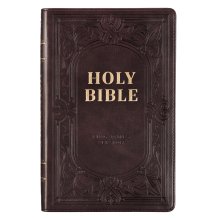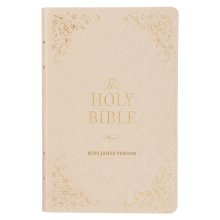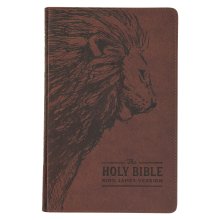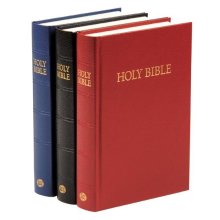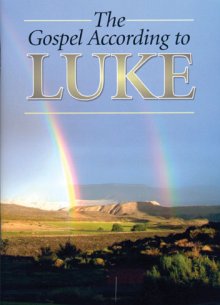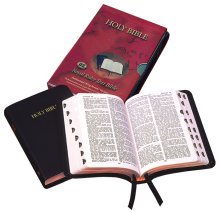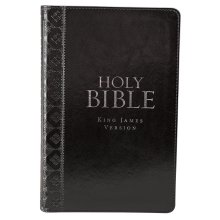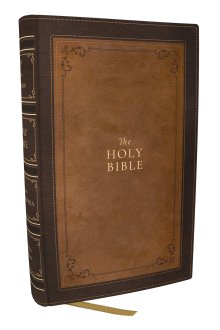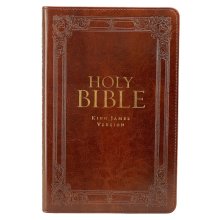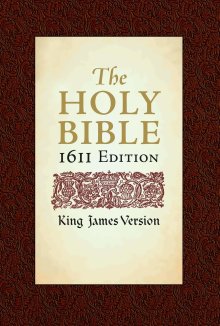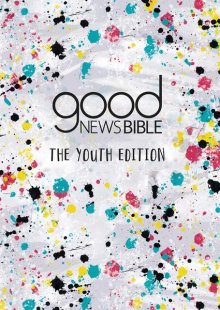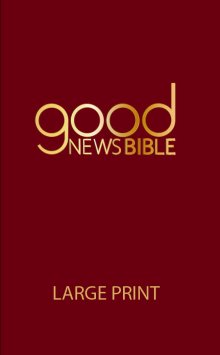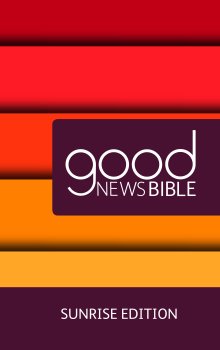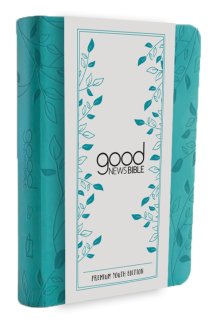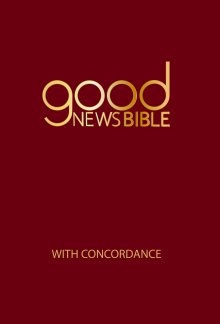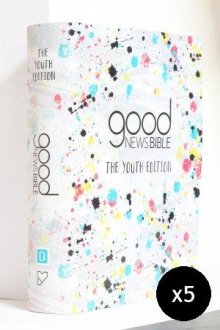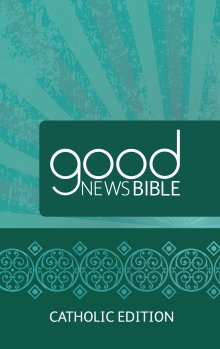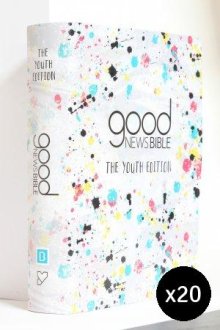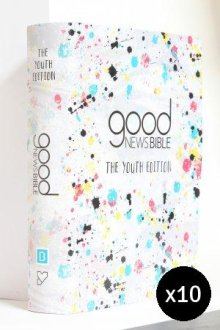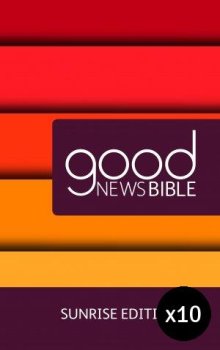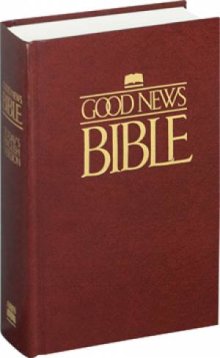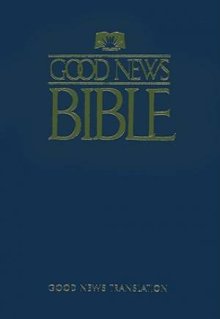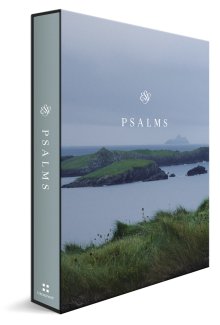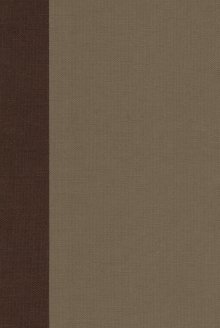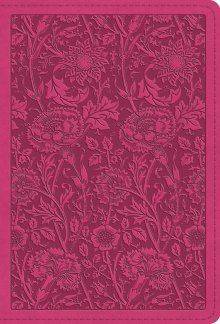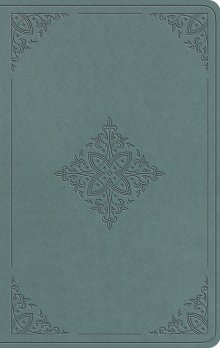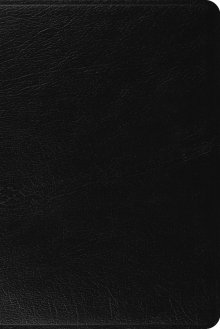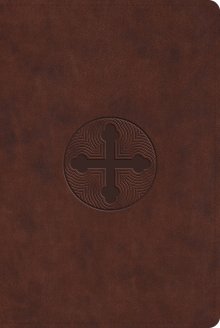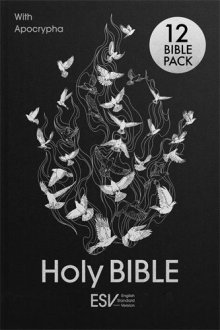Choosing The Right Bible
Aaron Lewendon - Eden Bibles & Bible Study Specialist
With more than 20 English Language translations each available in 25 or more different editions the choice of Bibles excites and bewilders. Choosing the right Bible for you is important - even if you already have more than one.

It’s hard to know which Bible to get
There are dozens of translations, each with a different style and approach. So here is our no-nonsense guide to which Bible you should buy. We also cover some common terms you’ll find when browsing.
Choosing a Bible Version
There is no one way to translate a book as large as the Bible.
With such a cultural and linguistic distance between then and now, it’s really more of an art than a science: an art that seeks to communicate the Bible’s truth to today’s readers. That means that there are numerous different Bible translations out there. Nowadays, they are more commonly called different versions of the Bible. The two words, though meaning different things, are used pretty interchangeably. For ease, I’m just going to stick with ‘version’.
The big stumbling block for people trying to choose a Bible is which version to pick. There are a lot to choose from. It also doesn’t help that they almost all go by acronyms. How would you, as a new Christian, feel if you were asked to choose from NIV, ESV, NRSV, NLT, KJV, NKJV?
Daunting, no?
To help you choose with speed and confidence, here is a quick run through four of the most popular versions of the Bible:
The New International Version Bible:
Short for the New International Version Bible, the NIV is the most popular version of the Bible. It’s written in pretty standard English and is the one you’ll most likely find in a Church. Its simple text means that it is often given away to new Christians. If you are looking for a first Bible, the NIV Bible would be a solid choice.
The King James Version Bible:
For almost as long as there have been English Bibles, there has been the King James Version Bible. This one is the classic Bible. Back then, it was made to be a Bible for the people but is now seen as more of a difficult Bible that is the mainstay of seasoned readers and Christians. It’s very poetic and not easy to read, but it is also the best written of all the Bibles. This has led many people to wonder if Shakespeare wrote the King James Bible.
The Good News Bible:
The UK's favourite Bible. The Good News Bible is a relevant, readable and reliable translation of God's word. The Good News Bible features Annie Vallotton’s iconic line drawings, along with the easy-to-read style. This makes the Good News Translation a highly-popular choice for all ages. Especially children and youth.
The English Standard Version:
Like the King James Bible, the ESV Bible is a complex and rich version. The main difference between the two is the near-400 years between them. The ESV was the choice of many Bible scholars, students, teachers and preachers. Now, though, that has changed somewhat. With a range of attractively presented journaling and illustrating editions, the ESV has become a choice for creative journalers thanks to the intended beauty and richness of the version.
How do Bible translations work?
In the world of Bible translation, there is often a perceived trade-off. You can have a Bible that is either accessible to modern readers or one that holds fidelity to original manuscripts far and above all else. I’ll come back to ‘perceived’ in a minute, but for anyone new to Bibles, this distinction is a useful guide.
So, you’d be surprised to know that translators don’t like to refer to their translations as “easy to read” or “accurate but difficult”. Rather, they call the distinction in translation styles by a different set of names: formal, dynamic, and idiomatic.
In short, these names describe how the Bible is translated.
Imagine a spectrum of how accurate a Bible is. At one end are all the literal Bibles. At the other, paraphrases. But that division is not nearly as simple or true as we’d like to think. After all, no Bible sets out to be purposefully inaccurate. Nobody is trying to water down the Bible. Because language and meaning have changed so much in 2,000 years, simply translating words on a one-to-one basis is impossible. Language doesn’t work that way. If every word in German, for example, had a one-to-one English translation, we wouldn’t be using words like iceberg, doppelganger, kindergarten, and schadenfreude.
It’s worth bearing in mind that every Bible translation has an element of interpretation. There is no trade-off between accurate and readable because there is no way to have a translation of the Bible that is 100% accurate.
So, when picking a Bible, don’t feel like you have to go for a word-for-word Bible. They are right for a particular reader, but if you are new to choosing a Bible, then feel free to explore the wider array of what is avaliable.
When choosing a Bible, there still tends to be these three main avenues. Word-for-word, thought-for-thought, and paraphrase. To help you find the right Bible, here’s a quick list of the most popular Bible versions, grouped by these three different styles.
Word-for-word Bibles:
Formal means they kept to the form the text takes. This means being literal right down to the very words used. The more common name for this is ‘word-for-word translation’.
Formal Translation of the Bible
Thought-for-thought Bibles:
Dynamic plays a little looser with the exact words used and instead seeks to communicate what the meaning of the text is. To try and communicate the text so that we would understand it in the same way that somebody alive at the time of the original text’s creation would have understood it. These Bibles are called ‘thought-for-thought’ translations.
Dynamic Translations of the Bible
Paraphrase Bibles:
Idiomatic is the loosest of the three. Just as an idiom is one way of saying something in a way that is colourful, imaginative or easy to understand, so too is Idiomatic translation. An easier way to understand this is by the other name used for this style, "Paraphrase". Paraphrase Bibles use expressly contemporary language to share the message of the Bible.
Idiomatic Translations of the Bible
Which version of the Bible is easiest to understand?
For simple ease of reading, there are two sets of Bibles we’d recommend: Thought-for-thought Bibles and Paraphrases. These two types of Bible translation place an emphasis on making the message of the Bible approachable and easier to understand.
Now that we’ve covered the text of the Bible, let's look at everything else..
Bible Features
All translations of the Bible are published in a huge range of covers and styles. Editions specifically designed for children, youth culture and presentation purposes are plentiful. Softcover (paperback), leather cover, metal and even waterproof covers make Bibles practical for many uses and circumstances. And all translations come in a range of print sizes from the most compact to large, easily readable editions.
Aside from the choice of covers, colours and print size, and assuming you’ve already chosen your preferred translation, the choice is between a simple collection of the standard 66 books - with more in Catholic Bibles - or the same but with additional material and information.
These ‘Bibles-plus’ contain information, illustrations, charts, tables, timelines and notes from Bible scholars. They’re all intended to help you get more out of your Bible reading whether you read for personal devotion, study, teaching or public ministry.
There are three main types of Bible intended to enrich the reader's experience and understanding. These are Commentaries, Reference Bibles and Study Bibles. There are many similarities in what these Bibles provide, though each tends to specialise in providing the reader with a particular sort of assistance.
Commentaries offer greater understanding with background information, notes on authorship, historical context, Bible themes and life application. Some are ordered ‘thought by thought’ and others follow a ‘verse by verse’ structure.
Every translation of the Bible is supported by at least one Bible commentary. Many cover the whole Bible in one volume. Other commentaries form a series of books each matched to a separate Testament or individual Bible book.
The great strength of a commentary Bible is the scriptural insight given by the author, usually a noted and experienced scholar. Commentaries by the great Bible teachers of the past can be compared with those written with the benefit of modern research to show how spiritual thought has developed or remains unchanged.
Reference Bibles are put together so they read like any Bible, but provide links or ‘cross-references’ between related words, phrases, topics, themes or people throughout the whole Bible.
This means you can easily find places in the Bible where the same story is told, the same theme is discussed, the same person appears or the same idea is explored.
Reference Bibles allow you to follow how God reveals his message over many centuries and through many people and events. Often this means ‘cross-referencing’ words of prophecy - the promises and warnings given by God, with the fulfilment of those words in later books of the Bible.
Study Bibles are the most comprehensive 'Bible-plus' Bibles in terms of the amount of background and historical information they include.
Study Bibles usually include a dictionary of Bible terms, diagrams and maps, a time chart, a daily reading plan, introductions and outlines of each book. Discussion starters and even puzzles might be included depending on the intended readers.
As with most commentary and reference Bibles, study Bibles usually include a life application Bible as a guide and support to applying the truth of the Bible to everyday life.
Finally but just as important is to know if you're choosing a Bible to keep in one place or to travel with you. All Bible translations and just about all commentary, reference and study Bibles are available in slim line, pocket and easy-to-read large print editions to suit your use, preference and needs.
A Quick Guide to Bible Features
No two Bibles are the same. The features that help you read and navigate the text of the Bible vary between every edition. Here is a quick rundown of the most popular Bible features available today. Make a note of what you find useful or interesting. These terms will be what lead you to your perfect Bible. You can also use our QUICK BIBLE FINDER to quickly pick the right Bible for you.
Anglicised: the text of an Anglicised Bible is written with UK spelling and grammar, as opposed to US spelling and grammar.
Apocrypha: books not traditionally found in most Bibles. The Books and non-canonical texts of the Apocrypha are 1 Esdras, 2 Esdras, Tobit, Judith, Rest of Esther, Wisdom, Ecclesiasticus, Baruch and the Epistle of Jeremy, Song of the Three Children, Story of Susanna, The Idol Bel and the Dragon, Prayer of Manasseh, 1 Maccabees, 2 Maccabees.
Cased: cased Bibles come with an additional layer of protection or decorations. Usually in cloth and imitation leather, Bible cases can be also bought separately.
Chain Reference: A Bible that organised the references in the text into a thematic, topical or logical chain.
Chronological: The books and stories of the Bible are not presented in the order they are said to have happened. Chronological Bibles present the Bible in historical order.
Clasp Fastening: A clasp across the Bible’s cover that keeps it closed.
Compact & Pocket: A smaller-sized Bible that is easy to transport.
Concordance: A guide to the meanings of names and words found in the text of the Bible.
Cross Reference: Notes that indicate where a verse either references or is referenced by another part of the Bible text
Devotional: A Bible that has been broken down into smaller, often daily, readings.
Economy: A cheaper Bible that is often designed for giving away as an outreach tool.
Family Record: A Bible made to be passed down through the generations of a family. It features a series of presentation spaces for names and relations.
Gift & Award: A Bible that is made as a gift or at special events. These are often cheaper than usual Bibles, feature a stylish design and include features to help with reading the Bible.
Gilt Edges: A Bible that has coloured edges of a page, often in silver or gold.
Gospels: The books of Matthew, Mark, Luke, and John. These are all accounts of the life of Jesus told by four different people.
Illustrated: A Bible that has illustrations inside. These can be found in children’s Bibles, Bibles with sections for colouring, and most famously in the Good News Bible.
Interlinear: A Bible that simply presents the Hebrew or Greek text alongside its English language translation.
Journaling: Halfway between a Bible and a notebook, Journaling Bibles have thicker paper and wide margins for you to write in.
Large Print: A bible whose text is printed in a larger font than is usually found in Bibles.
Life Application: A Bible that features articles and aides to help you apply the Bible text to the Christian life.
Maps: Charts of the land as it would have been known at the time of the Bible.
One Year Bible: A Bible that has either been structured into 365 daily readings or comes with a plan for reading the whole book in a year.
Parallel Bibles: Parallel Bibles feature two translations of the Bible in one binding. A kind of two-for-one. They can contrast different Bible versions or even different languages. Parallel Bibles often feature one translation on one page and another translation on the next.
Paraphrase Bibles: A Bible that has been written into a modern or expressive language, rather than formally translated from the original scriptures.
Pew Bibles: Plain editions of the Bible that are designed for Churches and groups.
Presentation Page: A space in the front of a Bible marked for writing a name, date and message. Most often found in Gift Bibles.
Pulpit & Lectern Bibles: Large-sized Bibles that are used for Church readings. Both the overall size and text is scaled up, making reading from a distance easier.
Ribbon Marker: A thin strip of cloth that can be used in lieu of a bookmark.
Study Bibles: A Study Bible features extras such as articles, commentaries, features, notes and other aides to deeper Bible reading.
Thinline & Slimline Bibles: With thinner paper and covers, these Bibles aren’t as thick as traditional Bibles. They tend to be roughly an inch thick.
Thumb Index: A Bible-navigation feature, a thumb index is a series of stickers or indents on the page edges that mark out where each book of the Bible begins.
Wide Margin: A Bible with a greater amount of space at the page edges. This is for great notes and reflections, as well as journaling and decorating.
Words of Jesus in Red/ Red Letter: A Bible that prints the words spoken by Jesus in red. This is as opposed to the black text used for the rest of the Bible.
Zip Fasten: A Bible with a cover that can be sealed by a zip. Most often found in compact and pocket Bibles
Use our Bible Finder to discover your next Bible today.
Frequently Asked Questions When Buying a Bible
1. What is the best Bible for a beginner?
The best Bible for beginners is one that’s easy to read and understand. Popular choices include:
- NIV (New International Version): Balanced and clear language.
- NLT (New Living Translation): Modern and conversational, great for devotional reading.
- Good News Bible: Simple and accessible, perfect for younger readers and new Christians.
2. What is the difference between Bible translations?
Bible translations differ in how they balance accuracy and readability:
- Word-for-Word Translations (Formal): Stick closely to the original text (e.g., KJV, ESV, NASB).
- Thought-for-Thought Translations (Dynamic): Focus on conveying meaning (e.g., NIV, NLT).
- Paraphrased Translations: Use modern, expressive language (e.g., The Message, The Living Bible).
3. What is the easiest Bible to understand?
The NLT (New Living Translation) and Good News Bible are often considered the easiest to understand because of their simple, conversational language. They’re great for casual reading and devotionals.
4. What is a Study Bible?
A Study Bible includes additional notes, maps, and guides to help readers understand the context and meaning of scripture. Examples include:
- NIV Study Bible: Perfect for beginners and in-depth learning.
- ESV Study Bible: A scholarly favourite for detailed study.
5. What is a Journaling Bible?
A Journaling Bible has wide margins or blank pages for writing notes, reflections, or prayers. They’re popular with creative individuals who like to engage with scripture through writing or drawing.
6. What is the difference between the NIV and KJV?
- NIV (New International Version): Modern and clear, ideal for personal study and new readers.
- KJV (King James Version): Traditional and poetic, often chosen for its literary style.
7. What is the best Bible for children?
Bibles designed for children often include illustrations, simplified language, and engaging features:
- NIV Adventure Bible: Packed with fun facts and activities.
- Good News Bible (Youth Edition): Accessible and ideal for teens.
8. What is the difference between a Devotional Bible and a regular Bible?
A Devotional Bible includes daily readings, reflections, and prayers designed to guide readers through scripture. It’s ideal for creating a consistent spiritual habit.
9. What are Red Letter Bibles?
Red Letter Bibles print the words of Jesus in red ink, making it easier to identify His teachings within the text.
10. What is a Parallel Bible?
A Parallel Bible features two or more translations side by side, making it easier to compare versions. For example, it might include the NIV and KJV in the same book.
11. How do I choose the right Bible size?
Consider how and where you’ll use your Bible:
- Compact & Pocket Bibles: Great for travel or daily carrying.
- Large Print Bibles: Easier to read for those with vision challenges.
- Pulpit & Lectern Bibles: Oversized for public reading.
Shop Compact Bibles | Large Print Bibles
12. What is a Gift Bible?
A Gift Bible is designed for special occasions like baptisms, confirmations, and weddings. They often feature presentation pages and stylish designs.
13. What is an Anglicised Bible?
An Anglicised Bible uses British spelling and grammar, as opposed to American styles, making it ideal for UK readers.
14. Can I find a Bible with a reading plan?
Yes! Many Bibles come with reading plans, including One Year Bibles that organize scripture into daily readings.
15. What is a Life Application Bible?
A Life Application Bible includes notes and guides to help readers apply scripture to their everyday lives.
16. How do I pick a Bible for study versus casual reading?
- For Study: Choose a Study Bible (e.g., ESV Study Bible) or Reference Bible with in-depth notes.
- For Casual Reading: Opt for a simpler translation like the NLT or The Message.
17. What is the best Bible for gifting?
Bibles like the NIV Gift Bible or KJV Gift and Award Bible are affordable yet beautifully designed for gifting.
18. What is a Catholic Bible?
Catholic Bibles include additional books in the Old Testament, known as the Deuterocanonical books or Apocrypha. Examples include the Good News Bible Catholic Edition.
19. Are there waterproof Bibles?
Yes, some Bibles are designed with waterproof pages, perfect for outdoor activities or tough environments.
Latest Blogs

Bibles
Minecraft Bible for Kids: Faith Meets Fun After the Hit Movie
Now that they've seen The Minecraft Movie, now’s the perfect time to hand kids a Bible they won’t want to put down.

Bible Verse
Bible Verses About Peace
Read Bible Verses About Peace and discover how the Bible still speaks today.

Bibles
Gen Z and the Rise of Catholic Faith: Bible Trends to Watch
When it comes to church, Gen Z isn’t walking away—they’re walking somewhere unexpected.

Children's bibles
What is a Storybook Bible?
A storybook Bible is a children's book that presents narratives from the Bible in a simplified and engaging manner, tailored for young readers. These books combine vivid storytelling with colorful illustrations to make the teachings of the Bible accessible and captivating for children.

Bible
What is the New International Version (NIV) Bible?
Finding the right Bible isn’t easy. There are dozens of translations and hundreds of editions to choose from. Our new series of guides is here to answer your questions about the different Bibles on offer today.

Bible
What is the New Living Translation (NLT) Bible?
Finding the right Bible isn’t easy. There are dozens of translations and hundreds of editions to choose from. Our new series of guides is here to answer your questions about the different Bibles on offer today.

